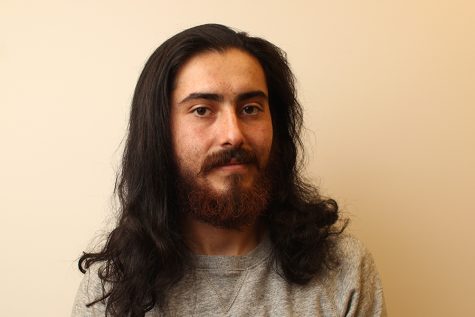Multilinguals grasp opportunities, diversity
May 17, 2015
The many languages, and their dialects, spoken by students, faculty and staff at Contra Costa College mirrors both the diversity of its surrounding community, and negates the concept that being multilingual is an act of desperation. It is rather a choice to become connected with people on a global scale.
“Language is connected to power,” English as a second language (ESL) department Chairperson Anoosheh Borhan said. “But many people from English-speaking countries tend to limit themselves to only learning one language.
“People who speak multiple languages have the power to open their minds to the world. Even learning simple new words in different languages is wonderful because it allows you to communicate in foreign countries and it is a small way to show respect to people of other cultures,” she said.
However, you don’t have to go to another country to hear a foreign language due to the diverse student population at CCC.
At CCC, there are more than 25 different languages spoken by predominately first or second generation community college students living in the U.S.
When asked what languages they speak at home with their families, student responses ranged from Spanish to Laotian, Mien, Tagalog, Punjabi, Hindu, Vietnamese, Portuguese, French, Mandarin, Japanese, Arabic, Cambodian, Korean, Hungarian, Russian, Nepalese, Yemen, Urdu, Polish, Hebrew to name a few.
But, according the sample data, the majority of CCC’s students learned English before any other language, and are more comfortable speaking it in public as it is the dominant language spoken in their everyday interactions at school.
“Unfortunately, because the British Empire was such a colonial powerhouse many peoples’ perception in the United States is that the English language is superior,” ESL professor Gabriela Segade said, “As a result those who struggle with grammar or have an accent in this country are often thought of as worthless, and that is a weird thought.
“Accents should be the mark of self worth and openness, and not negative social stigma.”
Segade said this is perception of English being the one language to rule them all is also reflected in business world, science and ensured its throne during the Internet boom of the early 1990s.
“English has become the common language for people who speak different languages to communicate with each other,” she said. “Ninety percent of the websites back then were in English, and set a precedent for (English) to become the dominant language online.”
But she said since the rise of social media the Internet has become more encompassing of world cultures, its languages and dialects.
Drama department professor Carlos-Manuel Chavarria agrees with Segade and said people in mostly English speaking countries tend to cling to xenophobic ideals.
So it’s no surprise the foreign language, ESL and art departments collaborated to create the Proud to be Bilingual campaign at CCC.
This campaign is currently happening campuswide and uses interactive student-made posters, hundreds of specialized buttons that represent the top 10 languages spoken at CCC, and a showcase in the Learning and Library Resource Center. All this was done with a budget of $2,000.
And to further break down the campus’ linguistic diversity, The Advocate conducted an anonymous survey of 200 students.
On the survey students were asked their ethnicity, cultural heritage, how many languages they speak, the language they learned first as child and which language they feel more comfortable speaking now.
The sample data shows only about a quarter of CCC’s student population speaks only English, and the rest are able to communicate in two, three, four or five different languages.
Adjunct English professor Ricardo Tavarez said most of the students in his English courses are either immigrants, or the sons and daughters of immigrants, from Asia or Latin America.
This reflects the largest, and fastest growing demographic at CCC, according to The Advocate’s compiled non-scientific sample data.
“Some are working on their third or fourth language and pretty much have the syntax down for each one of those,” Tavarez said, “But for multilingual students grasping the mechanics of English is a challenge but has a tremendous payoff.”
He recalls when he asked his local barber how learning English has helped his business.
“He told me his ability to talk to people decreased the time it took him to cut hair by 50 percent and raised his productivity,” Tavarez said. “And when students are able to communicate across languages you have the same result.”
“A richness is gained when you are able to communicate with people from any culture that is not your own,” he said.


